The highly anticipated Mario Buatta: Prince of Interiors sale begins at Sotheby’s tomorrow. In honor of The Prince of Chintz, I am delighted to welcome gust blogger Luzanne Otte today. Luzanne is a dear friend of Patricia Altschul, whose Mario Buatta-decorated home has been featured numerous times at The Glam Pad. Mario was renowned as a master colorist, and Luzanne recently had the opportunity to speak with Haleh Atabeigi, Mario’s exclusive decorative painter…. welcome Luzanne!

An interview with Haleh Atabeigi, by Luzanne Otte
Trompe-l’oeil artist and muralist, Haleh Atabeigi, assumed the role of Mario Buatta’s exclusive decorative painter following the death of her renowned mentor, Robert Jackson. Atabeigi is versed in a variety of techniques and styles, but Chinoiserie and Pompeian are most dominant in the Buatta oeuvre. Her mastery of color and shadow create photorealistic faux finishes of natural surfaces and the illusion of architectural elements.
Buatta drew upon these painterly effects on ceilings, floors, and walls as a means of achieving various ends: to balance and distinguish a space in need of drama, to establish grandiosity without sacrificing warmth, to add subtle ornamentation to complement and enhance the architectural lines of a room. All ends animated by the guiding decorative principle of cultivating an atmosphere of humble elegance.
Today I sit down with the lovely and talented, Haleh Atabeigi, to discuss a wide-range of topics from personal to professional: her career as a decorative painter, DIY tips on painting a floor, the creative process with Buatta, clever personal anecdotes from their 25 year friendship, and the genesis of a tribute at the exhibition for this week’s Sotheby’s auction, Mario Buatta: Prince of Interiors.

Has being a New York City based decorative painter always been your career plan?
Yes, I think that’s accurate. I moved to NY from Washington DC in 1993. I felt like NYC was where I could flourish, it felt like home from the first day. I came determined, refusing help from my parents (in retrospect, why didn’t I let them help me a little so they wouldn’t worry?) I thought NY is a beast, it can take you in and take care of you, but it can also just as easily make it so hard you have to leave. I got lucky, the city was kind to me, I made a connection to Robert Jackson by what seemed like sheer luck, and the rest followed. I can say with certainty that I made a living all these years, solely with my paint brush.
I finished my degree at The University of MD, though I started at Savannah College of Art and Design, SCAD. I learned to paint formally, starting at age 12 in Tehran, Iran. My parents, ever-encouraging, seeing I painted all the time and needing more, enrolled me in a class taught by a renowned artist, Aydin Aghdashloo. All the other students were at least 10 years my senior, and I caught up with them quickly. A few years later we left after the revolution, long enough for me to have learned how to paint. Robert Jackson taught me the rest.
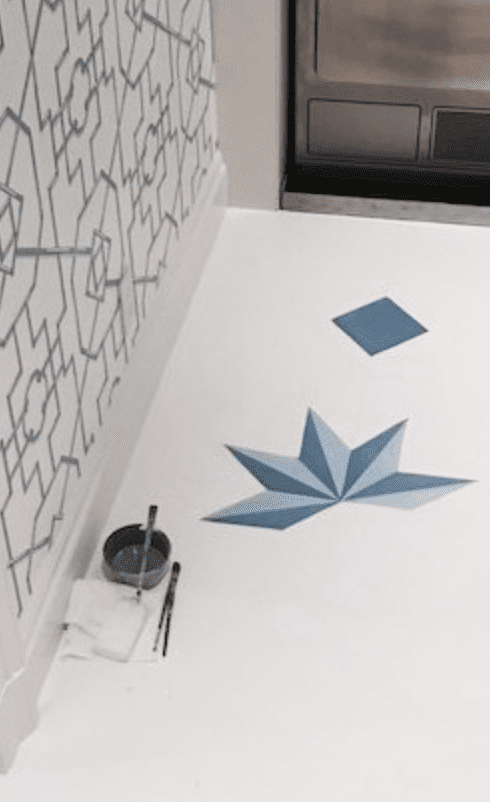

Is there a particular style or period of art from which you draw the most inspiration?
That is a great question for me to ponder. I cannot think of any specific artist or genre that I prefer over any other.
We are inherently inclined to look for what we find appealing, in everything we see. It could be a super melty part of a clock in a Dali, or the way the pendulum of a real clock moves. Beauty is everywhere, the conscious and constant pursuit of looking for it, makes for a lifetime of fun, and honing one’s eye. Eventually a sensibility is formed, and that makes it into my paintings.
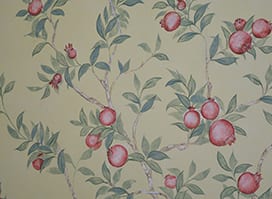
How did you first connect with Mario?
I connected with Mario through Robert Jackson in 1993. I was in my mid-twenties when I started working as Robert’s assistant. I began to take over for Robert around 2001 when he got ill and, sadly, too quickly passed away in 2003. From then on, Mario only hired me to paint. I learned so much from both those amazing men.
When I went to meet Robert for the first time, he asked me if I cook. I said, “yes,” and I think he hired me on the spot just as much for that, as that I could paint. I understood later how important the cooking question becomes when on the road for weeks together. I admit I found myself considering that criteria years later, when I hired assistants.
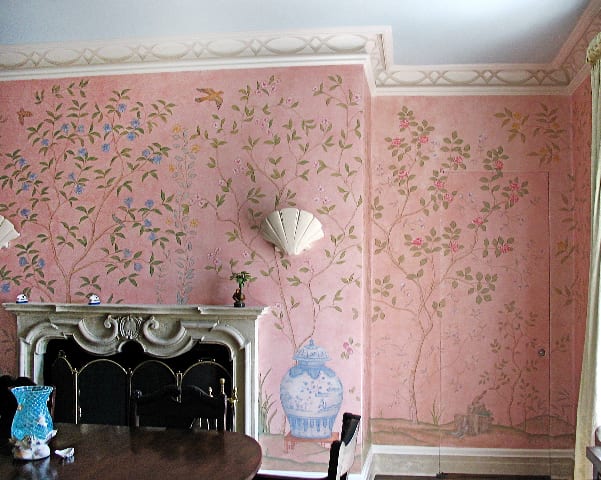
Oliver Messel was instrumental in developing Robert Jackson’s technique. Would you say Buatta and Jackson were your Messel?
I don’t know enough about Robert’s relationship with Messel to make a reasonable comparison, also I feel shy about having my name included in this grand list of influential people. I have not earned that.
I can say, however, that the influence of Robert and Mario on my life in every way is beyond measure. From them I learned an infinite number of things, the most important one – how to see – and those lessons inform everything I paint.
Robert said about marbleizing: “First it has to be pretty, then it has to look like marble.”
I realized while working with them, that it’s more important for a color to read a certain way, not simply be that on a color chip, even when you’re trying to match a wall color of a room you like. Color does not travel well. It behaves differently from space to space, and in the context of the objects around it. If someone matched the exact color of any of Mario’s glazes and painted it perfectly in someone else’s house, it would not feel the same. It would not do the exact same thing it did in the original room.
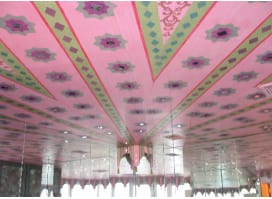
The mere fact of being hired by Buatta to continue after Jackson’s death would’ve been a tacit confidence builder. Did Mario contribute to your confidence as a young artist in more overt ways?
At some point in the beginning of my direct relationship with Mario, I confessed to him a moment of trepidation, whether or not I could do well what he was asking me to paint.
He said, “Honey child, you know what to do, just do it.” That sentence gave me the courage to paint, and started a close relationship that lasted till he passed away.
I realized I had free rein within the boundaries he would set, and that freedom let me add a twist that made the work personal, satisfying and challenging for me. With that balance, one ends up doing their best work. He pushed me and let me do the best work I could.
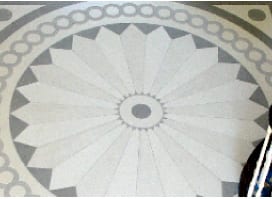
You were Mario’s exclusive decorative painter, but you didn’t work for him exclusively.
I didn’t cheat on Mario very much. He kept me busy, plus he was very clear that he did not want to share me. We didn’t have any kind of contract, but I never wanted to seek out anyone else to regularly work with.
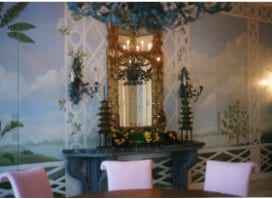
It never ceases to amaze me how much loyalty Mario inspired. How many projects did you work with him on over your 25 year relationship?
That needs research and hard thinking. If we figure out how many projects he did, I’m guessing it would be about 90% of that, conservatively. There were not very many Mario projects without decorative painting, in one form or another. There is a lot where it’s meant not to be seen, for example, matching marbleized walls to real marble next to it, same with wood panels, hiding switch plates by painting them to match any surface to which they were attached, etc.
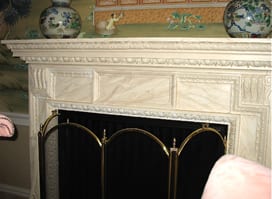
Did Mario always have a specific vision for color and design, informed by the client, that you executed or did you have significant creative input?
We had a language between us that worked. This is funny: more than once a painter or a carpenter or someone from another trade than mine, someone who had just met Mario that week, would ask me to translate Mario’s instructions for them, and were surprised how far the words were from what Mario had said, to what he wanted.
Mario’s instructions came in seemingly vague forms that I would begin to decipher until I zeroed in on the feel of it, the visual automatically follows that and it paints itself.
As the years went on there were fewer and fewer questions to clarify his instructions, and he let me take more liberties. When I mixed a color for him, always on site, he described how it should feel as well as the general hue, and fabric swatches to consider but never match. That would be “too mitchy matchy,”which I understood would lead to the next big sin of being “too decoratory.”
Mario somehow had an amazing ability to see the room finished the moment he laid eyes on it. The time it took to extract from him what color or anything this vision was as it pertained to things for me to paint, varied. He sometimes came prepared with an actual piece of fabric with a color to see, sometimes nothing. This was not because he didn’t know what he wanted, he just didn’t bring tangible evidence, so he would just tell me what he saw happening.
Part of my job was to marry the client’s ideas seamlessly into Mario’s vision, though with deference to Mario. We would begin our process and, as the job went on, we sought approval from the client periodically and made adjustments to accommodate their input. He didn’t make pretty rooms and then import the client’s personality into it, he started with the client and built the room around them.

While I’ve been in many homes that feature your work, the one I know best is from the home of one of my mentors, Patricia Altschul. Within 5 seconds of my first visit to the Isaac Jenkins Mikell House, I noted the seamless transition between the piazza’s exterior Minton tiles and your interior design. It encapsulates Mario’s vision of bringing the outside in. Was it a given to continue the pattern inside?
We decided every space that lead to the main entry separately, usually when I got to that part and needed to know what to paint.
The instructions for that area were: “Go look outside and call me back”. “OK, so make it like that but not the same”. For the middle: “Think of a central design, big floret, but not round. I want a skinny flower. Make it big, I want to be able to see it from the other side of the hallway.” This is not verbatim, but very close. I remember totally getting what he meant: Nothing can be inelegant in this house.

I’m beginning to understand why Mario didn’t have assistants for the last 15 years of his career. Being accustomed to working with individuals who are fluent in Buatta and could intuit instructions, likely wouldn’t leave much patience for teaching newcomers his lexicon. For a fastidious personality such as Mario’s, it would be far easier to manage tasks directly rather than communicate precisely how he wants them done to a newcomer.
Yet I digress, back to the Isaac Jenkins Mikell House. To brighten the dark entrance hall, you selected a Victorian octagonal tile pattern with quatrefoil motif. Is this an Atabeigi-Buatta hallmark or an original design? If the latter, please walk us through the creative process of how this design comes into being.
I think at this point it has become a hallmark, for sure. It started with Mario and Mrs. Altschul’s idea to do something inspired by The Roper House in Charleston, which Robert Jackson had painted in beautiful faux inlay octagons. I don’t remember if it was Mario or Mrs. A, I think it was Mrs. A, who pointed out a dark faux inlay floor like the Roper House was not feminine enough, and just plain too dark.
Mario kept the original idea, and turned it into a painted floor, in colors we mixed on site as we went on. I then designed the octagons to fit into the space, showed Mario what scale it had to be to fit, he approved it and I laid out the octagons, then embellished them with the stripes and florets and a million hand painted skinny outlines till it looked sharp, pretty, and finished. We needed a border design, Mario drew it with his finger in the air, “you know, one of these,” and I made it a size that fit. I studied a little too much math to be cool through high school, but now it helps a lot.
It sounds so casual now, but it was not. It had to be exactly what would make Mario happy, not one line different than what he wanted to see.
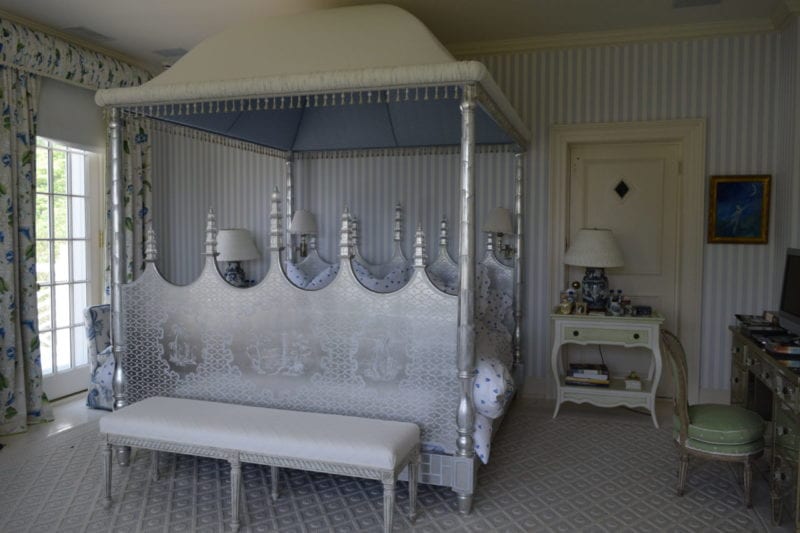


Is there any one project you worked on with Mario of which you’re most proud?
The Isaac Jenkins Mikell House is certainly one. Maybe because designing and adapting an idea for these floors took some focus, the calculation was extreme fun, and the dynamic way Mario worked; designing as we went, plus the fact that Mrs. A knows what she likes and does it with certainty, made it pleasant and memorable.
As painted floors go, there’s also one I did in Houston TX that was never published, one of my top floor favorites. It’s an extrapolation of a Robert Adam floor in light hues of gray.
Then there are the murals, all kinds of paintings, I really can’t find a favorite project, each of them makes me proud in their own way.

Given my bias toward the Isaac Jenkins Mikell house, it pleases me to know it’s at the top of the list! From the bright patterned floors in the foyer to the faux finished stone walls in the stair hall, tromp l‘œil ribbons in the master bathroom to striped bouillotte lampshades, your artistry pervades and permeates the home. Is there a particular object or area you enjoy painting most, in general?
The Isaac Mikell house is special to me, everything about working there was a pleasure. The work itself, Mario’s enjoyment of working on it with Mrs. A. made it progress at a pace that was as much about the journey than the result, with Michael somehow making sure everything ran smoothly and everyone had what they needed, before they even knew they needed it.
I do have my secret pleasure with a new series I started to make last year in my studio. I’m making plaster sculptures, on which I paint a painting. All the work I’ve done in the past 20 years or so was done on a hard surface. I could not bring myself to paint on a canvas that moves when I put a brush on it, so I solved that by making my own surface.
Everything I painted for Mario is so site specific, and they each have their own personality. I think painted floors are usually successful, and I enjoy nerding out on the math, while my eye decides scale and proportion.
Painting murals is a different pleasure, the simple joy of painting pretty things, is accompanied by the fear and concentration necessary in designing a whole room for Mario Buatta.
There are the hidden things painted that I mentioned before. They are also fun to do, there’s an aspect of a practical joke in it every time someone realizes that those knots you see on the stained wood crown molding, are not real. You can’t carve wood with the knots in.
It was not unusual for Mario to tell me very little about what he wanted me to paint, I just got on a plane with supplies to cover any possibility and painted anything he came up with.

It interests me to know what those who create such arresting interiors for others choose in their own homes. Edith Wharton decried wallpaper unsanitary and inferior, yet fragments of it abound in secondary spaces in her home. Mario decorated flawless interiors with nary an objet out of place, but self-identified as “the original hoarder.” Are you another paradoxical creature, or is your home reflective of the interiors you create for clients?
Only about three years ago I finally painted something in our own home, in Hudson NY, where we spend time away from NYC, and I have a bigger studio.
This gives me a chance to fess up: I made up a painted version of Mrs. A’s living room wallpaper in Manhattan, a silver I always had adored. I divided the wall in large rectangles to be reminiscent of silver leaf and glazed it to look more natural.
It’s a small dining room, but I used what I learned from Mario: If you put large things in a small room, it makes the room bigger not smaller. The result is very traditional, done in a more contemporary way. It goes well with this very strange and pretty Benjamin Moore pink that both Louie and I were attracted to right away. It’s called “Monticello Rose”. It has the ability to stand in for any kind of pink you want it to be. It’s dark, as much as pink can be allowed to be. A chameleon of colors.
These phrases come to mind: “The cobbler’s son has no shoes”; “The potter drinks from a broken cup.”
Also the funniest one of all by Mario Buatta. I honestly cannot remember who asked, someone asked me in Mario’s presence if I’ve done any decorative painting in my home. Before I had a chance to say anything, Mario jumped in with this: “you think she wants to see this when she goes home? Are you crazy? Of course she doesn’t.” Then he turned to me, we continued working out whatever we were doing, making the funniest show of cutting off the interruption.
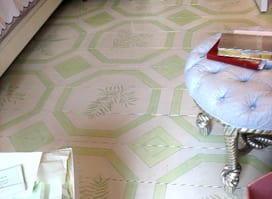
Having spent so much time together, it sounds as though you developed an intimacy and special rapport.
My relationship with Mario was close, sweet and quiet when it was just us. We traveled together, lived together, I’d sometimes cook breakfast lunch and dinner for us on our trips, and make him rest when no one was around. “I want my baked potato burnt to a crisp!” he’d say
Me: “I’m on the scaffold, don’t worry they’re in the oven already.”
The days were often tense and hectic and we worked very hard. He was one of the hardest working people I’ve ever met. He obsessed, and so did I with him. We talked about the work in spurts over dinner, but not in urgent tones, and in small intervals in the middle of talking about anything and everything.
When you miss Mario, is there a particular memory you return to that helps put a smile on your face?
There are so many….
For almost everything I do, there’s a Mario sentence that makes me chuckle. There was the one time where Mario asked me to paint the crown molding “real quick.” There was a beautiful Cezanne on the wall, I’d have to paint above it. I told him I won’t do it, and he can’t make me. I really did. He joked loudly for everyone to hear: “you don’t have to move the Cezanne, just don’t drip on it.” A few minutes later he made our lovely client help him take it off the wall. She did it in high heels and gracefully, I might add.
He never intended on me painting with the Cezanne. It was his way of fixing it, getting his crown molding “real quick,” all with ease and humor. Now every time I’m about to put myself in a dangerous drip situation, I think of that and laugh.
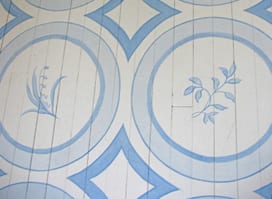
Speaking of dangerous drip, should a reader desire to paint their floors, have you a recommended resource on how to get started and common pitfalls?
The prep is fairly simple. It needs to end up with a nice coat of preferably Alkyd based white paint. Benjamin Moore “Super White” is the color everything I’ve painted on starts with. Semi Gloss latex is the next best thing, though it does not produce the same translucency after being painted, and it’s harder to make pretty.
There’s a surprisingly simple mistake I’ve seen made, and that is not applying a coat of primer before painting. Sometimes depending on the surface, the paint keeps on getting soaked in forever, and the color gets boring as time goes by.
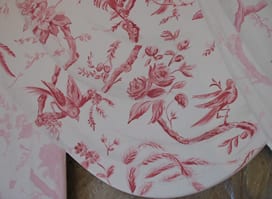
Relatedly, how are the painted floors best cleaned and maintained to preserve ornamentation?
Soap and water is best, nothing gritty that has scrubbing bits in it, it dulls the surface. If there’s a floor that gets damaged by a leak or something, it gets complicated, then they should just call me.
I usually put three coats of hard floor varnish on it, the products are getting better all the time. I like Bona floor products, they make a floor cleaner as well, which I confess I’ve never tried, I’m usually gone by the time it needs cleaning. But the varnish is great.

In homage to Mario, you’re painting a mural for the display at the upcoming Sotheby’s auction. Is there special meaning behind the medium or subject matter you’ve chosen?
First, I’m so grateful to Emily [Evans-Eerdmans], Rush Jenkins of WJR Design, and Dennis Harrington of Sotheby’s for getting behind the idea of allowing me to contribute to Mario’s last stage.
The idea began with Rush’s thought to start by looking to Mario’s Kips Bay show house at the Time Warner building for inspiration. Robert Jackson had painted the original, I had assisted him and remember how it felt being there, and the color palette that Robert used.
Collaborating with WRJ Design, we took some elements from that room and made a design that made up for eliminating the door in the original room. I decided to canvas the wall, Mario liked canvased walls and often did not get to do it. I used elements and methods from Robert’s Kips Bay mural, added a few things I made up on the spot that I liked for it, and left it airy and minimal. WRJ was very gracious in letting me do what I thought was pretty, and started me off in an excellent direction, with the idea of painting an insinuation of the Kips Bay room.
It was a surreal experience painting in Mario’s absence, but with very cool large photos of his face going up all around me, as they started to be installed. One day his photo looked a little vexed, I painted an open empty bird cage that day for him having flown away, I thought he looked happier.
To me it’s an homage both to Robert and Mario. Mario only ever used two decorative painters regularly and loyally in the major part of his career, Robert and me. I miss both Mario and Robert dearly.
I just finished and am looking forward to seeing it with all of Mario’s beautiful objects.


Visitors may view Haleh’s tribute and the 922 lots for sale in Mario Buatta: Prince of Interiors auction through January 22nd. The auction takes place on January 23-24, 2020.

Stay tuned, as next week Luzanne will return to The Glam Pad with a recap of Sotheby’s recent panel discussion on Mario Buatta and The English Country House Style in America featuring Michael Diaz-Griffith, Charlotte Moss, Jane Churchill and Emily Evans Eerdmans.
For more guest posts from Luzanne Otte, please visit the links below… Luzanne also writes for Town & Country.
- INSIDER SECRETS FROM PATRICIA ALTSCHUL’S HOUSEGUEST
- THE HISTORY OF SILHOUETTES AND AN INTERVIEW WITH PATRICIA ALTSCHUL ABOUT HER COLLECTION
- THE INSIDE SCOOP FROM PATRICIA ALTSCHUL’S BUTLER, MICHAEL KELCOURSE
- PATRICIA ALTSCHUL DISHES ABOUT HER FAVORITE TABLE LINENS
- THE MAGIC OF MARIO: THE LIFE AND LEGEND OF MARIO BUATTA
- HOW TO LIVE AN ELEGANT LIFE: PATRICIA ALTSCHUL SHARES HER SECRETS
- THE HISTORY OF SILHOUETTES AND AN INTERVIEW WITH PATRICIA ALTSCHUL ABOUT HER COLLECTION
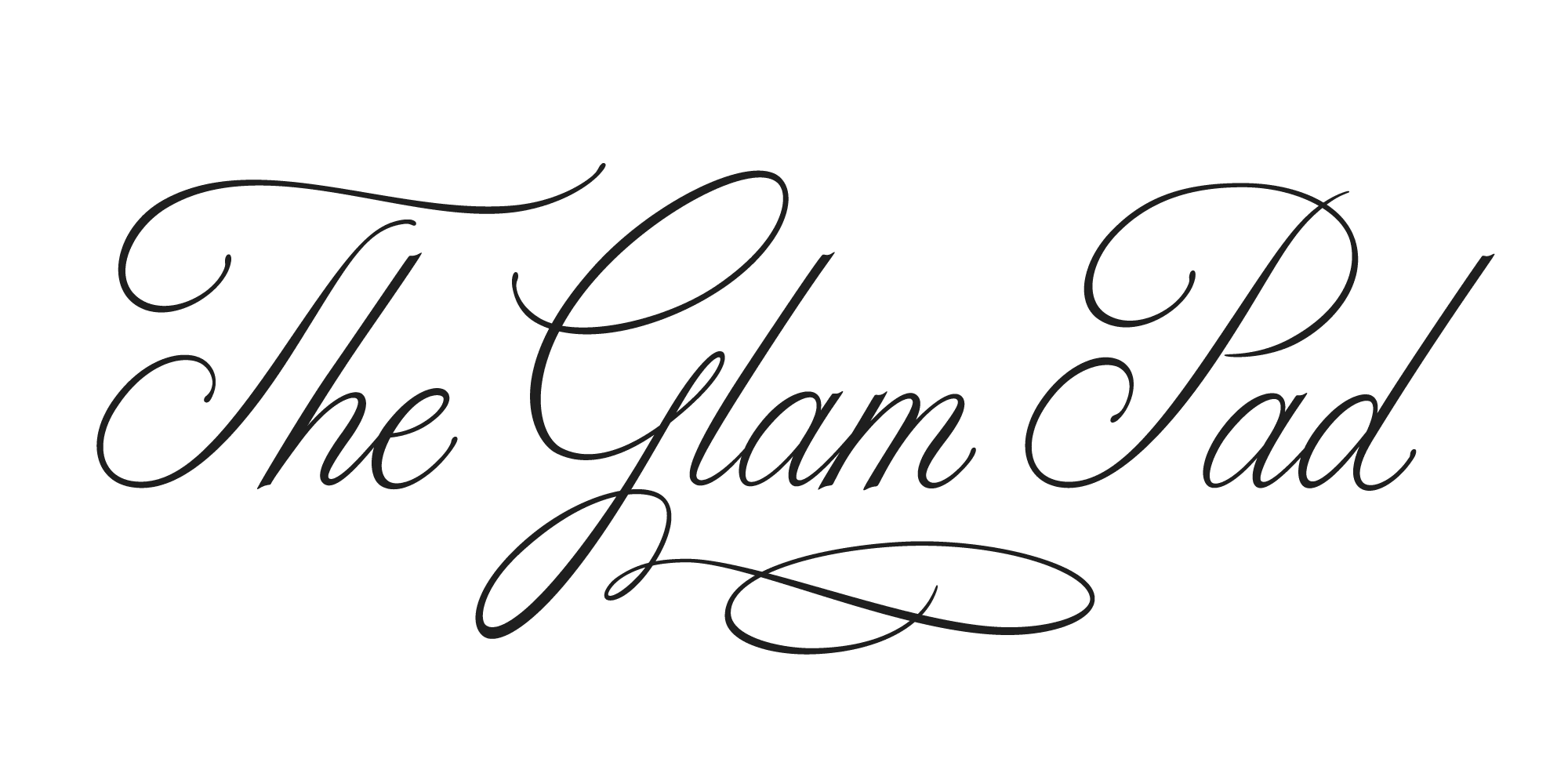


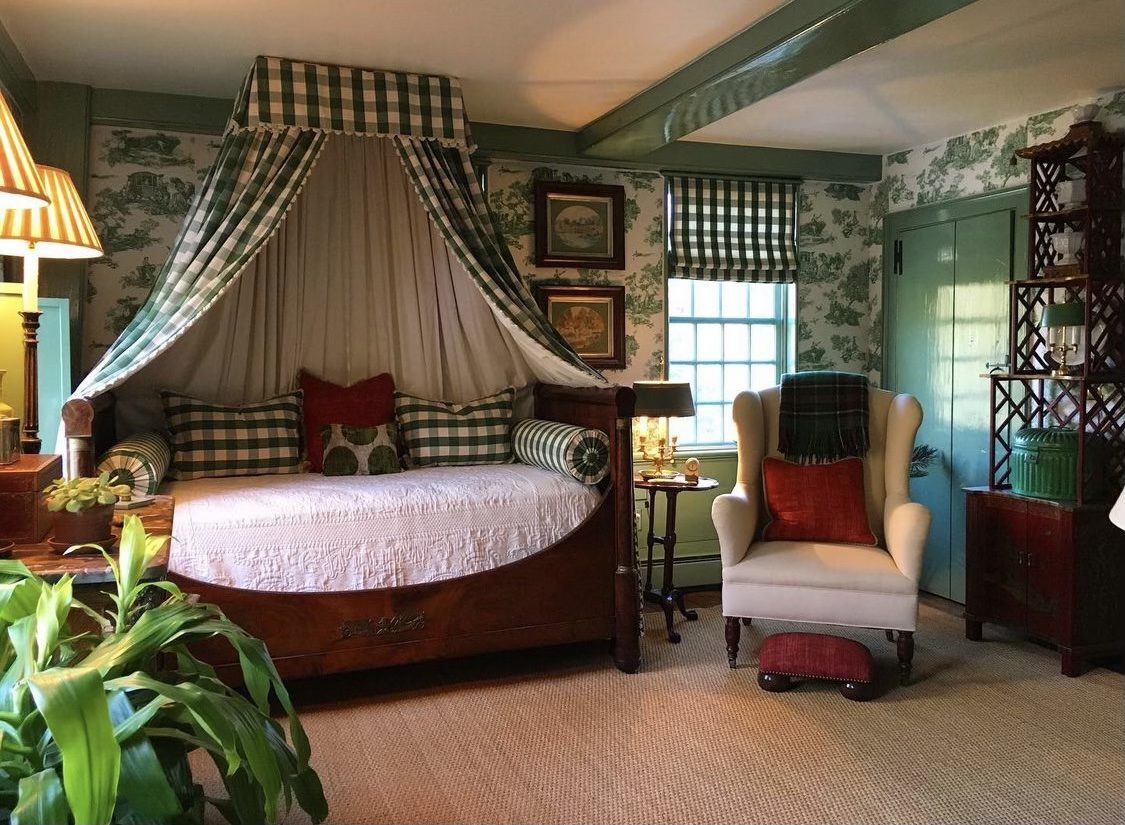

Interesting Piece of work. Thanks!
Thanks so much! These floors catch my eye in all of Mario’s work but never been able to find anything on them. Leave it to the Glam Pad! Thanks!
What a beautiful interview . What a pure artist Haleh Atabegi
Love her works . Thank you . For sharing this history friend ships and art life
Thank you for reading! Haleh is truly a pure artist. Not many can say they have worked exclusively as an artist since age 25.
This was just a lovely interview. It was so interesting and warm. It made you feel like you knew Mario in some way. How lucky were both of them to find one another to create such beauty hand in hand. I’m in awe of the talent Haleh has as a painter, a mathematician, an artist. Just think if they’d never met!
The mathematics of it all hadn’t occurred to me until the interview. Suddenly, the beauty assumed heightened impress!
She is so talented, and I hadn’t realized that she worked for Robert Jackson. Beautiful body of work, and so nice that she got to work with the auction on the decor. It’s only right.
Haleh has quite an impressive pedigree, so I was surprised when I started digging to not find much written. She’s certainly not a self-promoter, but I promote everyone and everything I love so had to share! So grateful Haleh was game.
It seemed as if the WRJ Design group was keen on including the important people in Mario’s life. When I visited the exhibition, I’d never seen a more colorful display. His spirit truly shone through thanks to the work of his many friends.
Thank you for sharing such a profoundly fascinating post. Beautifully written, marvelous responses. Touching as well. Every aspect was deeply enjoyable. Thank you.
Thank you so much! I sort of left this one with the subject, as Haleh had so much fantastic information to share. We appreciate you reading it!
Another wonderful interview by Luzanne. I confess to a small author crush; what a happy surprise to see this in my Inbox – and with promises of more articles to come! It’s Christmas in January.
Ms. Atabegi’s stunning works are so inspirational, it’s hard for me to find words adequate to her talent. The entry is exceptionally brilliant, and learning how it came to be is a great story. I will be dreaming of painted floors.
You are so kind to take the time to be so supportive in writing that comment. Crush away!
There’s another really great one coming that you’ll enjoy, but sometimes my real job interferes with the fun hobbies.
So beautiful. I loved the feeling that Buatta was “vexed” so she painted the empty birdcage to imply that he had “flown away.”Brought me to tears.
Haleh’s forthright nature and poetic responses opened my eyes to a different side of Mario. I’m glad to read you were similarly moved.
Andrea, “Thank You” for presenting the most interesting and exquisite photographs and bio on Haleh Atabegi. Again, our design aesthetic awareness has been heightened!
I’m touched to tears, lots of them, by everyone’s sweet and complementary notes. I hope I deserve it, thank you Andrea and Luzanne for publishing this, I don’t get many opportunities to talk about Mario publicly, and share that I miss his so much. Answering Luzanne’s clever and thoughtful questions was very therapeutic:-) Thank you for that…
And another confession: I just realized there are comments just now. I’ll be keeping my day job, not very good at anything else it seems:-)
We’re moved to know the interview provided a catharsis for you! Learning how your story fits into the Buatta narrative enhances our understanding of the master, while concurrently highlighting your special gift. Our deepest gratitude for the opportunity, Haleh.
Luzanne and Andrea xx
Such an in depth and brilliant interview, both informative and inspirational. Haleh’s love and respect for her mentor is affable and heartwarming. Her explanation of her techniques were simply spelled out and yet bewildering to me. Samples of pictures of her work were extraordinary and stunning. Haleh is truly
talented. Hope to see more of her work in the future.
Thank you for appreciating the great talent of Miss Haleh! We hope to show you more of her work, too.